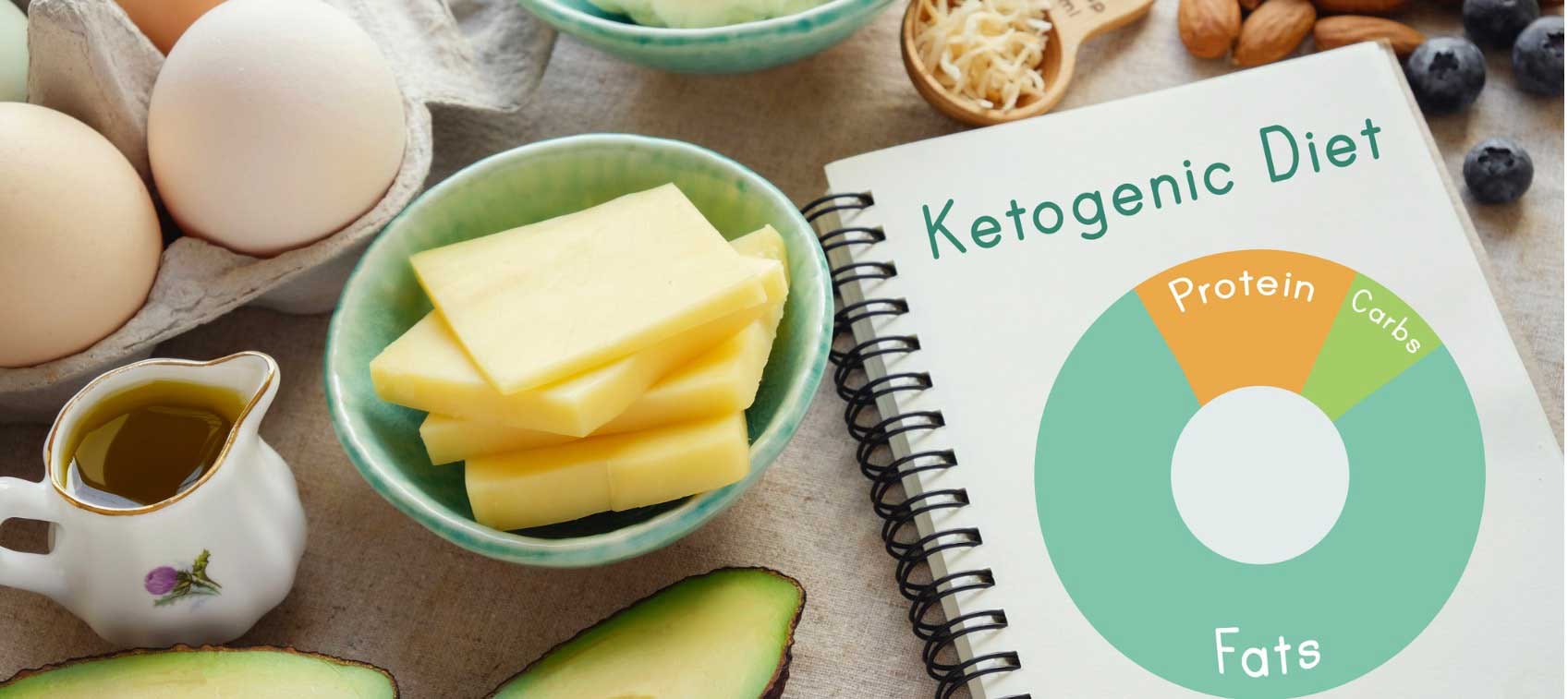
One of the hottest diet trends in medicine and the media is the ketogenic diet. It continues to draw press for its appeal to people trying to lose weight, people suffering from neurodegenerative conditions (e.g. Alzhemier's, Parkinson's), athletes and body builders, biohackers, and anyone who loves to eat a lot of fat. Will it stick around and be adopted like the Paleo diet or will it fizzle out like most other diets do?
I first learned about the ketogenic diet in medical school as a diet helpful for epileptics, so I was a little surprised to see it gain momentum over the years. But at every conference I attended, there seemed to be at least one talk dedicated to the health benefits of this diet. Over time, I read up on the research showing the impressive metabolic advantages and I was hooked. I decided to personally try the ketogenic diet to see how it made me feel.
What is the Ketogenic (Keto) Diet?
The keto diet has actually been around for a long time. In fact, researchers in the early 1900’s observed that epilepsy patients who fasted experienced fewer seizures. Fasting can quickly and effectively induce ketosis, or the burning of fat to produce ketones. The keto diet is another way to put the body into ketosis (fat burning mode) and essentially all one must do is eat a low carb and high fat diet to achieve this.
The main fuel source of the body is glucose, which is the sugar molecule we absorb and burn from our carbohydrate intake. If we consume too much glucose the body will store any excess in the liver and muscles, which is known as glycogen. Our muscle cells also make glucose in a process known as gluconeogenesis. As you can see, there are many checks and balances in place for glucose metabolism. This is good because our blood sugar levels need to be like Goldilocks’s porridge: just right.
When we eat meals that are high in carbohydrates, the pancreas will release the hormone insulin to help shuttle those glucose molecules into your cells. The western diet is, unfortunately, too high in carbohydrates. Consequently, many people are dealing with insulin issues like insulin resistance, metabolic syndrome, or diabetes as the body struggles to maintain proper blood sugar balance.
In order to go into nutritional ketosis, where the body burns ketones for fuel in place of glucose, the keto diet suggests restricting carbohydrates to 5%, proteins to 20%, and increasing fats to 75%. For most people, the body will be in ketosis within a couple days to a week. It may take longer for some, depending on many factors. When we go into ketosis, the body relies less on burning glucose and shifts gears to burning fat to release ketone bodies like beta hydroxybutyrate to be used as fuel.
In general, blood sugar balance is easier to maintain when the body primarily burns ketones over glucose. This is why you may notice a more balanced mood while going Keto as your blood sugar is more stable and less like a roller coaster! Plus, when the body goes into ketosis, you effectively burn fat stores. This is another reason why so many people like Keto because their weight drops and they don’t feel like they are dieting!
The Ketogenic Diet Food List
The best way to explain the keto diet food list is to break it down into food groups. My version of the list is very general, so I can give you a taste what keto looks like. If you would like to learn more about keto and what foods to eat, my favorite book about the topic is The Keto Diet by Leanne Vogel. In fact, I don’t believe I would have succeeded without her book as it has a wealth of knowledge with great recipes and troubleshooting tips.
Here is my simplified ketogenic diet food list:
Fats (to be consumed regularly with every meal, 75% of total daily calories):
Oils: Olive oil, coconut oil, macadamia nut oil, MCT oil, walnut oil, grass fed butter/ghee, cacao butter, pasture raised lard, etc.
Foods: Nuts, seeds, nut/seed butters, avocados, olives, eggs, bacon, full fat dairy products (if dairy tolerant)
Proteins (in moderation, 20% of total daily calories):
Beef: ground beef, sausage, rib-eye, New York strip, ribs, etc.
Pork: bacon, pepperoni, sausage, pork rinds, ribs, etc.
Seafood: sardines, salmon, trout, herring, mackerel, crab, lobster, etc.
Other meats: Chicken, lamb, and wild game
Protein powders: collagen peptides, beef gelatin, whey protein (if dairy tolerant), egg protein, etc.
Carbohydrates (in limited amounts, 5% of total daily calories):
Vegetables: arugula, asparagus, broccoli, Brussels sprouts, bell peppers, bok choy, cabbage, cauliflower, celery, chard, cucumbers, eggplant, fennel, Kale, lettuce, shallots, spinach, zucchini, etc.
Starchy vegetables (even smaller amounts): acorn squash, cassava flour, delicata squash, green plantains, parsnips, potatoes, sweet potatoes
Fruits (in limited amounts): Avocados, blueberries, blackberries, cranberries, lemons/limes, raspberries, strawberries. Other fruits can be eaten in small amounts like apples, figs, grapes, kiwi, oranges, and pears.
Other foods:
Bone broth, fermented foods (kimchi, sauerkraut, kombucha), coffee, tea, nut milks, cacao nibs, cacao powder, stevia sweetened chocolate chips, vanilla extract, spices/herbs, erythritol, monk fruit extract, stevia, xylitol, and certain condiments like mustard, horseradish, coconut aminos, balsamic vinegar, etc.
What Does a Ketogenic Meal Plan Look Like?
Typical keto diet meals may vary depending on preference, but here is an example of what your meal plan might look like:
Breakfast:
2 eggs cooked in coconut oil or butter
2 strips of bacon
¼ avocado
Some sautéed kale.
Lunch:
2-3 Salmon cakes with dill cream sauce
1 cup Cauliflower rice
Dinner:
Coconut Lamb Curry with spinach
½ cup (or more!) Guacamole made with MCT oil
1 slice Carrot cake (prepared keto style of course)
Sounds easy right? Here’s where it starts to get a little more complicated.
The Key to Ketosis
The key to getting into ketosis is really sticking to the recommended macronutrient breakdown (75% fat, 20% protein, 5% carbohydrate) and avoiding processed foods as processed foods are full of flour and sugar. Any food or drink high in carbohydrates and sugar will prevent you from entering and staying in ketosis as these foods flood the bloodstream with glucose molecules.
To help accelerate my body into ketosis I intermittent fasted (fasted from 8pm-noon the following day) every third or fourth day. Fasting helps burn through glycogen stores that slow down the process. Every day before lunch, I would measure my ketones using a ketone blood meter: I would prick my finger and allow the drop of blood to reveal whether or not I was in ketosis. I was looking for numbers in the range of 0.5-3.0 mmol.
On day five, I hit 0.5 mmol and then I hovered from 0.7-1.8 mmol for the next two weeks. I knew my body and brain were running on ketones, and I could feel it!
Benefits I Experienced Going Keto
- Mood & Energy Improvement
I had a very balanced mood and energy level throughout the whole day with no afternoon tiredness or “need” to eat something. In other words, my blood sugar was very balanced, and it felt effortless to go 6 hours between meals - Improved Brain and Cognitive Function.
Wow! My brain felt so sharp and focused, as word recall, name recognition, and my ability to focus was unparalleled. A brain running on ketones works differently than a brain dependent on glucose metabolism, that’s for sure! - Renewed strength and endurance at the gym.
While in ketosis, I felt that my muscles had more strength and I didn’t notice any fatigue post workout.
Many people start the keto diet hoping to lose weight. I generally run on the thin side and was a little concerned about dropping weight while in ketosis. Fortunately, I didn’t lose any weight during my experience. But, from what I’ve read and observed in my patient population, people who are carrying extra weight from increased fat tissue are more likely to lose weight on a Ketogenic diet.
What is the Keto Flu?
By now you’re probably wondering “why isn’t everyone going keto if you get to eat so much fatty, delicious tasting food and lose weight at the same time?” I wish it was that simple, but there was one element of the diet I struggled with: on about day three I started to develop what’s known as the “keto flu.” This is a constellation of symptoms that includes, but is not limited to:
- Fatigue
- Nausea
- Muscle cramps
- Insomnia
- Heart palpitations
- Headaches
- Irritability
- Diarrhea
I experienced almost everything on this list and it was very unpleasant. The keto flu can last for many days and I believe it is the Achilles heel of the Ketogenic diet as most suffer with it while trying the diet for the first time. The reason the body experiences these symptoms is because it is transitioning from burning glucose as the primary fuel source to ketones. It can also be due to dehydration or electrolyte deficiency. Whatever the cause, it’s a very uncomfortable phase to move through and I struggled to stay on the diet while experiencing these symptoms.
If you choose to go keto, you may want to ask a family member or friend to join you on this journey for support. Fortunately, I had my wife, Briana, complete the diet with me which made meal preparation that much easier. She reported similar benefits but, unfortunately, shared my struggle with the keto flu for many days.
The Modified Paleo Diet
Will I go keto again? Certainly! I did feel really good when the keto flu wasn’t affecting me, and I’ve heard that once you do the diet again the symptoms are much more mild compared to the first time.
I’m still a big proponent of my Modified Paleo Diet as I find that so many people feel great while on it and adhering to the régime isn’t all that difficult once you get the hang of it. On the Modified Paleo Diet, the focus is on eating foods that our ancestors would have consumed like eggs, high quality meats and seafood, nuts and seeds, a plethora of vegetables, fruits, and healthy fats (like ketogenic). If people feel okay and don’t develop digestive upset from legumes (lentils, beans) and gluten free grains (rice, quinoa, etc.), then those foods are allowed in moderation. Grass fed butter and ghee are also allowed as these oils are rich in nutrients and most people with dairy sensitivities can handle them in small amounts.
Have you tried Ketogenic before? Let me know on my Facebook page www.facebook.com/drewsinatraND/.
Sources:
Vogel, Leanne. The Keto Diet. Simon & Schuster. 2017.


